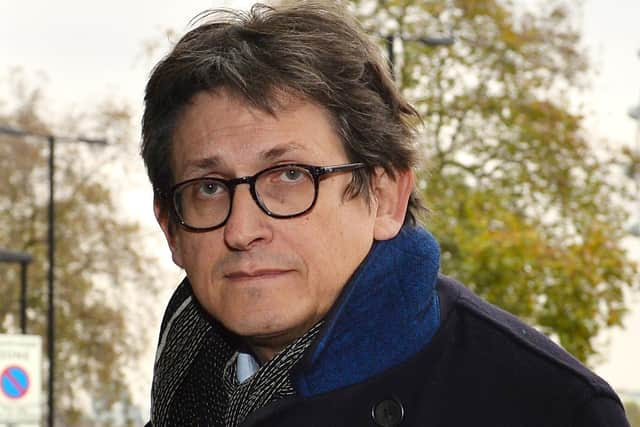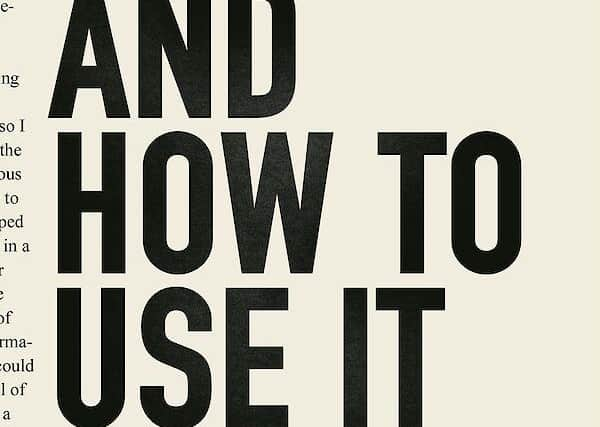Book review: News and How to Use It, by Alan Rusbridger


Alan Rusbridger was editor of The Guardian for 20 years, from 1995 to 2015. Reviewing his last book, Breaking News, in these columns, I called it fascinating and important. The same adjectives may fairly be applied to this new one, with its first sentence: “Who on earth can you believe any more?” I would add only that this book is easier to read than its predecessor, principally because it is written in short or shortish self-contained chapters, arranged to offer you an A to Z survey of the media, no longer of course restricted to printed paper.
Fake News flourishes on the web. We all know that, but sometimes forget that fake news has always been with us. “Never believe anything till it has been officially denied” is an old saw. The slogan “all the news that’s fit to print” invites, and has always invited, the question “who decides what’s fit?”
Advertisement
Hide AdAs a former Guardian editor, Rusbridger is suitably high-minded, a touch puritanical and censorious. Climate change is the great issue of our time. We may agree without however accepting his view that serious newspapers or television channels should not give space or a voice to journalists who, without scientific authority, question or deny its urgent reality.


There are interesting entries on editors and their responsibilities, also their relations with newspaper proprietors, this something Rusbridger was mostly spared, The Guardian being owned by the Scott Trust. He is fair to Rupert Murdoch, which may surprise some, and admits that Murdoch’s war against Fleet Street’s printers’ unions was necessary and “ultimately to the benefit of the media business.” Among admirable proprietors he names Roy Thomson, though neglecting to mention that the first newspaper he bought in the UK was The Scotsman.
He rightly draws attention to the damage done by the evisceration of local newspapers, remarking that the concerns of residents of Grenfell Tower about the building’s safety might have been picked up had there still been reporters covering the borough for a local paper. Now, even where there are local freesheets, reporting is often done at a distance by someone seeking information from a screen, not from the streets and talk with residents.
There are confusions and self-contradictions in the book. There could scarcely fail to be, given its organization, pleasing as that is. Rusbridger returns again and again to the question of how we can be sure that what we read or hear is true. The proliferation of fake news and misinformation is certainly worrying, likewise the propensity of people to believe the stuff and engage in conspiracy theories. On the other hand, he asserts that the reader today “is, for better or worse, a sceptical reader…likely to ask ‘who is telling me this? Why are they telling me this?’” I suppose one can only say that some readers are credulous, ready to swallow anything, others sceptical to the point of cynicism; and perhaps this has always been the case.
Rusbridger believes in collaborative journalism. Writers should not only invite responses from readers, but learn from them too. This often makes sense; some readers will know much more about a subject than the journalist may. Yet even today most readers don’t respond while some who do are eager only to air their prejudices or often fanciful theories.
This is an agreeable and very worthwhile book. It invites you to think and question. It is informative and entertaining. Like many in our trade, Rusbridger is inclined to exaggerate our influence. It has for instance always seemed to me that Rupert Murdoch and the Murdoch Press, with its shifting political allegiance, tended to respond to changes in public opinion rather than creating these changes.
Advertisement
Hide AdOne may justly complain that the book is a bit parochial. Its parish is big enough to be called a diocese, but it’s a metropolitan and Anglo-American one. There is almost nothing on the European press, the Irish, Scottish, Welsh and English provincial press. There is a chapter on Brexit which Rusbridger, like his former newspaper, deplores. Yet his almost exclusive concentration on Anglo-American media, like our media’s fixation with American elections and comparative indifference to French, German or Italian ones, bizarrely breathes the spirit of Brexit. Very odd indeed.
Alan Rusbridger: News And How To Use It, Canongate, 316pp, £18.99
A message from the Editor:
Advertisement
Hide AdThank you for reading this story on our website. While I have your attention, I also have an important request to make of you.
The dramatic events of 2020 are having a major impact on many of our advertisers - and consequently the revenue we receive. We are now more reliant than ever on you taking out a digital subscription to support our journalism.
To subscribe to scotsman.com and enjoy unlimited access to Scottish news and information online and on our app, visit https://www.scotsman.com/subscriptions
Joy Yates, Editorial Director